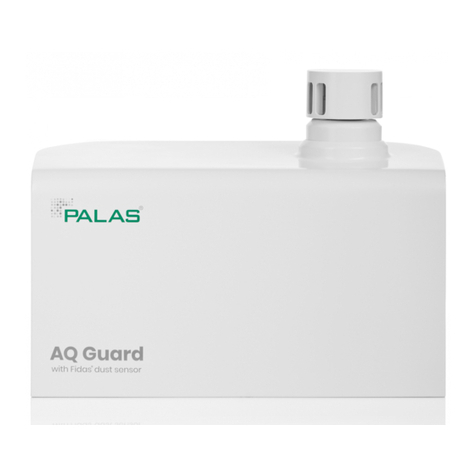
2For your safety
5249-en-us_V1.2_11/20 7
2 For your safety
2.1 Hazards and safety instructions
Aerosols Aerosols can be inhaled and may be hazardous to human health.
1. Avoid unprotected exposure to the aerosol produced.
2. Wear suitable personal protective clothing when appropriate.
Compliance with work
regulations
4Comply with the accident prevention regulations issued by the
employers’ liability insurance association as well as with local and
national work regulations.
Chemicals Chemical liquids or vapors can cause damage to health.
1. Work involving chemical liquids may only be performed by specialized
personnel.
2. Observe the safety data sheet provided by the manufacturer of the
chemicals.
3. Wear suitable personal protective equipment.
Qualified person 1. Only a properly qualified person may perform installation,
commissioning and any other work on the device.
2. Follow the generally accepted codes of practice when installing the
device.
Safe use of the device 1. Do not use the device in a flammable or explosive environment, e.g.
rich in hydrogen or oxygen.
2. Do not use the device with flammable or explosive carrier gases, e.g.
rich in hydrogen or oxygen.
Safe operation of the
device
1. Operate the device only when it is connected to an electrical outlet with
residual current circuit breaker.
2. Only operate the device with the insulation and/or casing fully installed.
3. Make sure that the housing and/or the casing on the device is
undamaged, complete, and correctly installed.
Repairs 1. Do not attempt to repair any components that serve a safety function.
2. Use only original Palas parts when replacing components.
Environment Excessively low or high temperatures and excessively high relative humidity
can damage the device.
1. Install the device in rooms with an ambient temperature of 0 °C to 40
°C.
2. Protect the device against liquids and permanently high relative
humidity.
3. Protect the device against contact with open flames and heat sources.
2.2 Warnings
The warnings in this manual are highlighted with pictographs and signal
words. The severity of a hazard is indicated by the pictograph and signal
word.





























